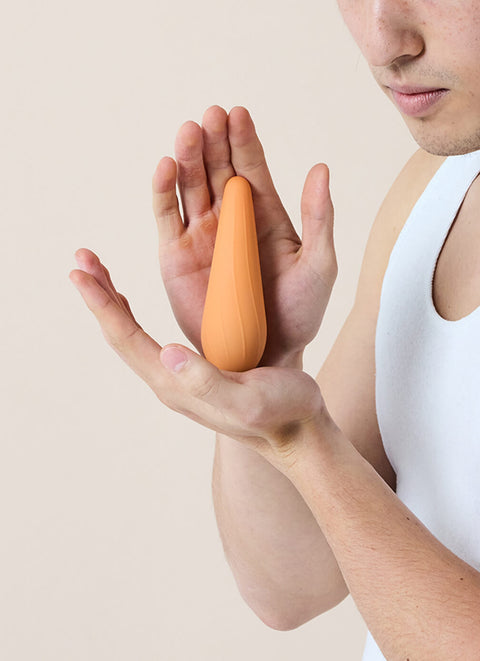STIs—or sexually transmitted infections—are infections that are spread through sexual activity.
This includes sharing bodily fluids (kissing, oral sex, rimming, sharing sex toys, unprotected/condomless sex) and skin-to-skin contact (scissoring, penetrative sex, rubbing genitals together).
For many of us, the thought of getting an STI is pretty scary, and we might even imagine gloomy doctor’s offices, invasive tests, and embarrassing treatments.
Fortunately, the reality is pretty different. Advances in medical science and sexual healthcare have made it so that getting tested for an STI is fast, non-invasive, and really simple.
Many STIs are easily curable, and the few that aren’t curable are becoming increasingly easier to treat and live with.
Stigma against STIs is lessening, and the shame that used to come with having an STI or even just getting checked for one is beginning to decrease.
There has truly never been a better time to have an STI: we currently know more about how to diagnose, treat, and live with STIs than at any other point in human history.
While they’re still a serious matter and can have impacts on our health (more about that in a minute), STIs are no longer the scary or shameful conditions that we once imagined them to be.
Why do we call them STIs instead of STDs?
Calling them an STI (Sexually Transmitted Infection) acknowledges that not everyone experiences the symptoms of disease when they have an STI.
Many STIs show no symptoms of disease at all, which is why it’s so important to get checked regularly rather than wait for symptoms to show up.
What does it mean to have an STI?
Having an STI says about as much about you as having a cold does: that is to say, very little.
All kinds of people can get STIs—they don’t discriminate based on gender, age, sexuality, or level of sexual experience.
According to the World Health Organisation, approximately one million STIs are acquired every day worldwide, with a yearly average of about 376 million new infections.
What this says is that STIs are extremely common, and while we shouldn’t use that as an excuse to neglect our sexual health we should definitely take it as a sign that many people get STIs and there is nothing gross or shameful about that.
How do I prevent STIs?
As common as STIs are, they’re still not great fun to have. Some can be painful and itchy. Some can cause swelling, unpleasant smells, or excessive discharge.
And some, when left untreated, can have serious impacts on our future sexual health and fertility.
So there’s certainly nothing to be ashamed of if you do have an STI, but we should do our very best not to get one—and not to pass them on if we do have one.
Here are some common and effective ways to prevent STIs:
- Condoms. When used correctly, condoms are extremely effective at preventing STIs that can be transmitted through bodily fluids. However, they are not effective at preventing STIs that can be prevented through skin-to-skin contact. We recommend using lube with condoms to help prevent breakage.
- Dental dams. Dental dams are a thin sheet that can be used as a barrier against the mouth, vulva, or anus. When used correctly, they’re extremely effective at preventing STIs that can be transmitted through bodily fluids and skin-to-skin contact.
- Vaccinations. Vaccinations against Hepatitis B and HPV (Human Papilloma Virus) are available from your local GP, and are free for many people in Australia. These vaccinations don’t prevent other STIs, so we still recommend using a condom during sex.
- PrEP. PrEP, or pre-exposure prophylaxis, is a drug that can prevent HIV infection. It can be taken by people of all genders and sexualities, although we recommend speaking with your doctor to see if PrEP is right for you. PrEP doesn’t prevent against other STIs, so we still recommend using a condom when necessary.
- Limiting your sexual contact. The only way you can be guaranteed not to get an STI is to not have sex. That’s a pretty big ask for most of us, but if you or your partner have symptoms of an STI or are waiting on a test result, you can still enjoy things like mutual masturbation (fingering or handjobs) which is far less likely to result in transmission of an STI (just remember to wash your hands thoroughly afterwards).
Here are some common myths about how to prevent STIs—these are things people often think prevent STIs, but they actually don’t.
- Birth control. The contraceptive pill is effective at preventing pregnancy, but not against STIs.
- Pulling out. Pulling out, or removing your penis from your partner’s vagina, mouth, or anus before ejaculating, doesn’t prevent STIs or pregnancy. It is possible for pre-cum to contain both STIs and sperm—which is why it’s so important to use a condom.
- Being a virgin. Your chances of getting an STI remain the same whether you’re having sex for the first time or the hundredth!
- Douching or washing. Using a douche won’t prevent STIs, nor will showering or bathing immediately before or after sex.
- Hand sanitizer. Good at helping stop the spread of coronavirus, but not suitable to use on our genitals. Hand sanitizer won’t prevent you from transmitting an STI, but it may irritate or burn your genitals.
How do I know if I have an STI?
The honest answer is that you won’t know for sure unless you get an STI check done by a doctor or nurse.
Many STIs have few or no symptoms, but some do have some telltale signs. Here are a few things to look out for—although please keep in mind this list is not exhaustive:
- Itching, swelling, or stinging around the genitals or anus
- Pain while urinating
- Pain during sex
- Blisters or a rash around your genitals, anus, or face
- An unusual scent or discharge coming from your genitals or anus
- Pelvic pain
- Sores or bumps around the genitals or anus
- Fever
How many STIs are there?
There are around 30 STIs, many with different—or no—symptoms. Health Direct has a lot of information about STIs and a symptom checker you can consult.
How do I get checked for an STI?
Getting an STI check is easy and relatively painless.
Your GP will be able to perform a test in their office, or you can visit a sexual health clinic for a check. Some sexual health clinics offer specific services to groups like sex workers, LGBTQI+ people, and people living with HIV.
Some may also be able to help you access treatment and contraception free or at a low cost.
Googling ‘sexual health clinic’ and the name of your city or state should bring up some good options, otherwise ReachOut has a list of the state health services, which will link to the sexual health clinics in each state.
Also, STI tests are pretty quick! You most likely won’t spend longer than fifteen minutes in the doctor’s office.
Before the test, you should let the doctor know if you’ve noticed any unusual symptoms. Don’t be shy—doctors have seen it all, and they’re trained professionals who likely won’t bat an eye at what you have to tell them.
The doctor might use a long cotton bud to take a swab of your throat, vagina, anus, or eye of your penis.
You might also be asked to provide a urine sample (which means you will need to wee in a little jar) or a blood sample (which means a nurse or doctor will take a vial of blood using a needle in your arm).
All of this might be a little uncomfortable, but it should be mostly painless.
If you have any concerns or questions about the tests or what they might involve, you should ask the nurse or doctor prior to beginning the test so you can feel totally comfortable.
Most of the time the doctor will need to send your results away to a lab before they can give you a diagnosis, so your results might come in a week or two after the test.
You should follow the doctor’s advice about whether or not you can have sexual contact while waiting for your results.
I have an STI. Now what?
As we know, STIs are common—but it can still be an unpleasant shock to know that you have one.
Depending on how your doctor prefers to work, they might ask you to make another appointment with them so they can tell you in person, or they might tell you over the phone.
No matter how they tell you, they should also talk to you about a treatment plan.
For most STIs, treatment might be something as simple as an injection, a course of antibiotics, or a special cream you need to apply.
The doctor can write you a prescription for the treatment and may even be able to administer it to you on the spot.
Some STIs, like hepatitis, herpes, HIV, and HPV can’t be cured, but they can be treated and managed to the point that you can continue to live life mostly as normal.
If you are diagnosed with one of these STIs, your doctor will discuss your treatment options with you and can also give you some more information and advice about living with the STI.
If you’ve hooked up with anyone recently, you should also tell them that you’ve been diagnosed. If they’ve contracted an STI from you but aren’t showing any symptoms, they could pass it on to other people—and it could affect their health long-term.
Whether the person is a long-term partner, a casual lover, or a one-night stand, they deserve to know; and we think they’ll appreciate your honesty and care in telling them.
If you feel like you can’t tell them face-to-face for some reason, a phone call or text message is fine.
And if you feel like even that’s pushing it, the Melbourne Sexual Health Centre operates a service called Let Them Know that allows you to message partners and inform them of your diagnosis freely and anonymously.
To learn more about the foundations of great sex with acclaimed sex coach Georgia Grace, check out NORMAL's video masterclass, The Modern Guide To Sex.




































